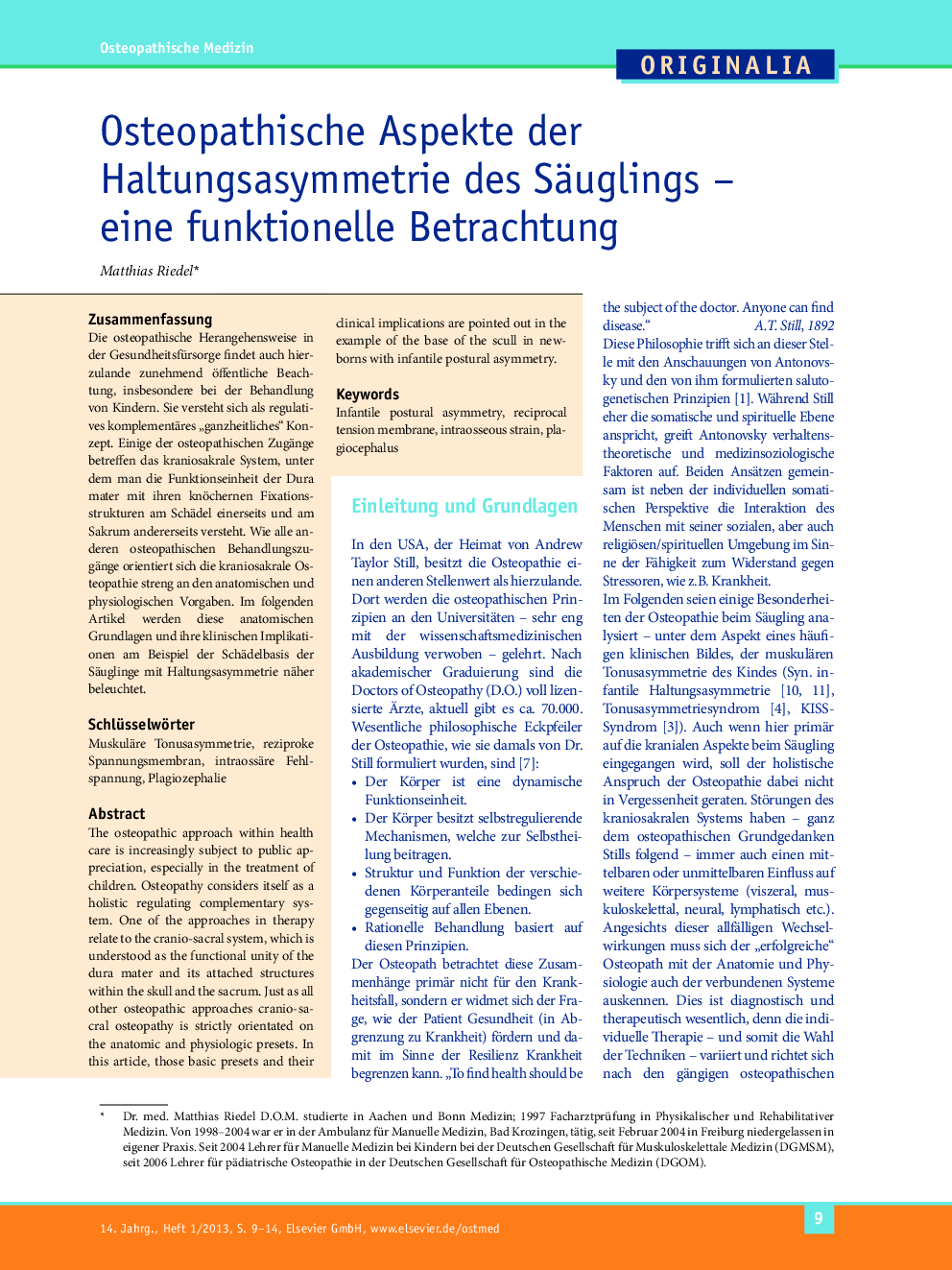| Article ID | Journal | Published Year | Pages | File Type |
|---|---|---|---|---|
| 2626557 | Osteopathische Medizin | 2013 | 6 Pages |
ZusammenfassungDie osteopathische Herangehensweise in der Gesundheitsfürsorge findet auch hierzulande zunehmend öffentliche Beachtung, insbesondere bei der Behandlung von Kindern. Sie versteht sich als regulatives komplementäres „ganzheitliches” Konzept. Einige der osteopathischen Zugänge betreffen das kraniosakrale System, unter dem man die Funktionseinheit der Dura mater mit ihren knöchernen Fixationsstrukturen am Schädel einerseits und am Sakrum andererseits versteht. Wie alle anderen osteopathischen Behandlungszugänge orientiert sich die kraniosakrale Osteopathie streng an den anatomischen und physiologischen Vorgaben. Im folgenden Artikel werden diese anatomischen Grundlagen und ihre klinischen Implikationen am Beispiel der Schädelbasis der Säuglinge mit Haltungsasymmetrie näher beleuchtet.
The osteopathic approach within health care is increasingly subject to public appreciation, especially in the treatment of children. Osteopathy considers itself as a holistic regulating complementary system. One of the approaches in therapy relate to the cranio-sacral system, which is understood as the functional unity of the dura mater and its attached structures within the skull and the sacrum. Just as all other osteopathic approaches cranio-sacral osteopathy is strictly orientated on the anatomic and physiologic presets. In this article, those basic presets and their clinical implications are pointed out in the example of the base of the scull in newborns with infantile postural asymmetry.
